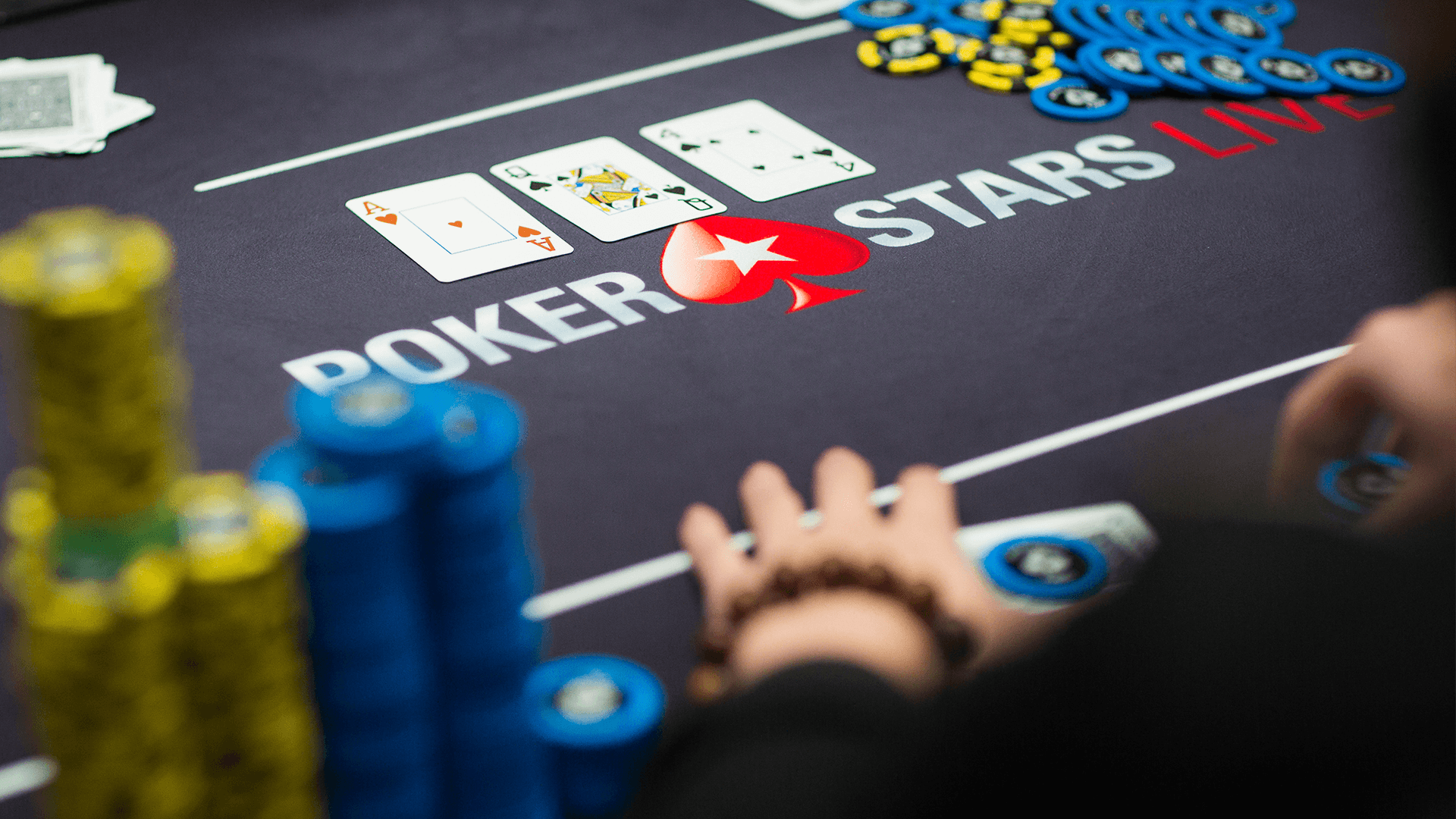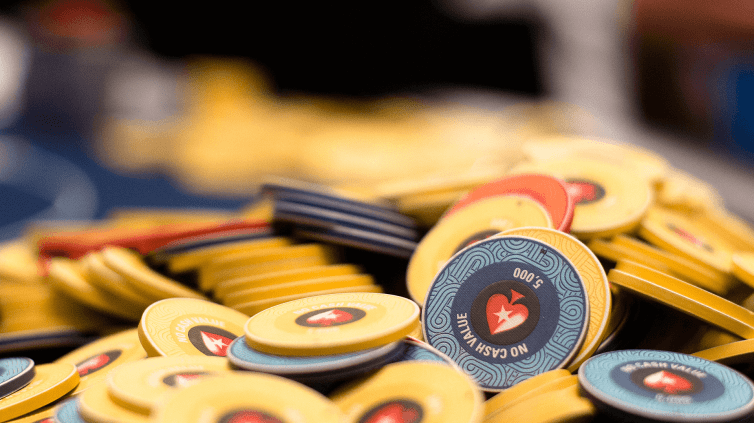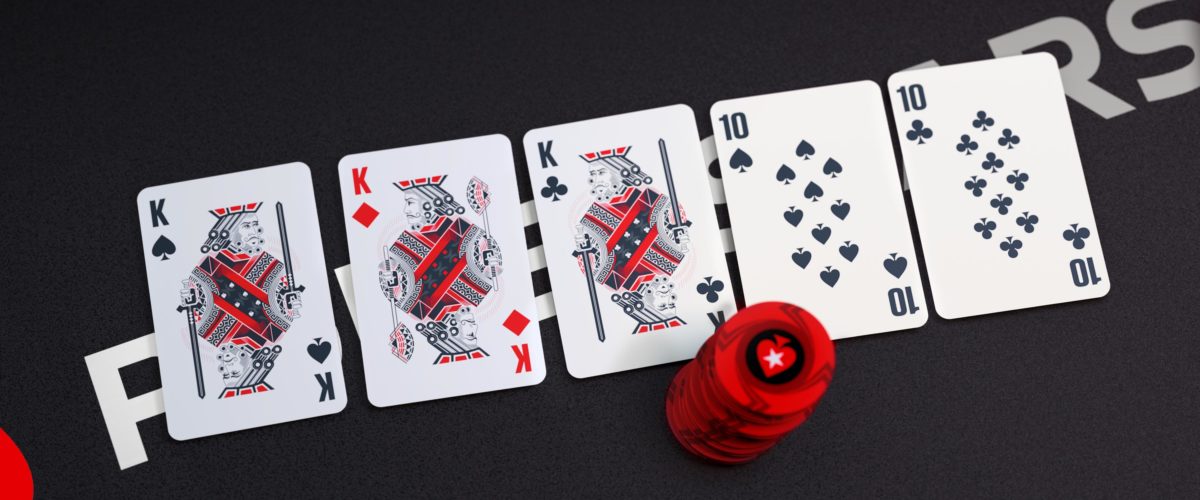Fixed Limit Hold’em: The Flop
The flop is a decisive point in any hand of poker. Three cards are dealt in the middle of the poker table, giving you the chance to form a five-card hand for the first time. It’s here where the strength of your starting hand can change completely. Even if you checked in the big blind holding 7♠ 2♥ , you can suddenly have a very strong hand on a board of 7♣ 7♥ 5♦ . On the other hand, a very strong hand such as QQ may suddenly look very weak when the flop comes A-K-5 – you’ve only got a pair of queens with an ace kicker, and all opponents with an ace or king have you beat. It is therefore important to re-evaluate your hand in terms of board texture, and adjust your strategy to the new conditions. How you should do this, and other things you should keep in mind is explained in this article.


Hand evaluation and strategies
It’s useful to divide all the hands that you can have on the flop into certain categories, as the distinction between made hands and drawing hands is important. If you have at least a pair and therefore a realistic chance of winning without having to improve your hand, then you have a made hand. When you have a marginal hand that isn’t strong, but has the potential to improve considerably then you are on a draw.
Example of a made hand on the Flop:
You are holding and the flop is A♣ K♣ and the flop is K♦ 10♠ 5♠ . Your made hand is K♣ K♦ A♣ 10♠ 5♠ – a pair of kings with an ace kicker.
Example of a draw on the Flop:
You have A♣ K♣ and the flop brings 10♣ 5♣ 4♠ . Since you already have four clubs (A♣ K♣ 10♣ 5♣ ), only one club is missing to complete your flush with two cards still to come. Therefore you are on a flush draw.
Strong and very strong made hands
These include: top pair, i.e. a pair of queens or higher, with top kicker, overpairs (JJ or higher) as well as two pair or better. If you have a strong hand you should almost always bet or raise and hardly ever fold.
Example of a strong made hand on the Flop:
You have A♠ Q♠ in middle position and raise. Only the button calls. The flop is Q♥ 10♥ 5♠ , which means you’re holding top pair with the best possible kicker. You therefore have a very strong made hand (Q♠ Q♥ A♠ 10♥ 5♠ ) and should bet. If your opponent raises, your hand is strong enough to re-raise.
Marginal made hands
These include: top pair without a strong kicker, small overpairs (pocket pairs that are smaller than JJ, but higher than the highest card on the board), as well as all other pairs.
If you have one of the better hands in this category (top pairs and overpairs) you should in most cases bet, but be careful if you are raised. It’s usually better to check, but you can also call if an opponent bets. If there is a reraise you should fold.
Example of a marginal hand on the Flop
You are sitting in the big blind with A♠ 8♥ . Two players in middle position call and you check. The flop comes J♠ 8♣ 6♦ . You check your pair of eights, the next player bets and the other opponent folds. Your opponent’s bet indicates they have hit the flop, but they could have a smaller pair or a draw. You should therefore be careful, and just call to see how the hand develops.
You have 3♥ 3♣ in the cut-off. A player in early position calls and you call as well. The button and small blind fold, and the big blind checks. The flop is K♣ 10♥ 7♠ . The big blind checks and the opponent in early position bets. Now your situation is considerably worse than in the previous example. Firstly your pair is much smaller and secondly there are only two cards that can improve your hand (3♠ and 3♦ ). It is therefore better to fold at this point.
Strong and very strong draws
They include: flush draws, open-ended straight draws and combination’s of both.
Example of a flush and straight draw on the Flop:
You have K♠ Q♠ on a J♠ 9♥ 4♠ board. In this case you have a flush draw and any T for a gutshot straight draw. In addition, you have two overcards, so you also have the chance to make top pair on the turn or river.
Example of a flush draw with middle pair on the Flop:
You have A♥ 8♥ on a K♥ 8♠ 5♥ board. Here you have a flush draw and a pair of eights. Even if your pair isn’t the best hand at the moment, you have two additional outs to make trips or two pair.
In general both hole cards have to be used in order to form a flush. If there are already three cards to a straight or a flush on the board, the draw is marginal or weak. Since all of your opponents can use the cards on the board, the chances are one of your opponents will make a better hand than.
Strong combo draws are often better than a made hand. In more than 50% of cases wins K♠ Q♠ against A♣ J♣ on a J♠ 10♥ 4♠ board. This is because a Spade, an Ace, a King, a Queen or a 9 could still hit – all of which improve K♠ Q♠ . This means you can play hands like this extremely aggressively with bets or raises. If you force some of your opponents to fold, the chance of winning increases, and you might even win the hand without showdown (if all opponents fold).
Example of a nut flush draw with a straight draw on the Flop:
You are holding A♠ K♠ on the button. A player in early position calls and you raise. The big blind and the opponent in early position call. The flop comes J♠ 10♥ 5♠ . The big blind bets and the player in early position calls. At this point you don’t have a pair, but you do have the nut flush draw, a gutshot straight draw (a Q on the turn or river would make the straight) and overcards. This means 18 cards make you top pair or better, therefore you have a very good chance of winning and should raise.
By contrast, if you have a small flush or straight draw and there are two cards of the same suit on the board, then you have to be careful. You can certainly bet, but raising should be avoided.
Example of a weaker flush draw on the Flop:
You are on the button holding 10♠ 9♠ . A player in middle position calls, you call, the small blind folds and the big blinds checks. The flop shows A♠ J♠ 2♦ . The big blind checks and the opponent from middle position bets. If you hit the flush you should win, but if you don’t hit, you don’t have many other ways of winning the hand. It is therefore better to just call. Folding is out of question, since the probability of making the flush is good at 33%.
Marginal draws
These include: gutshot straight draws, overcards and combinations of both, plus open-ended straight draws where you only have one card to a straight (e.g. AT on a 9-8-7 board), and flush draws with only one card in your hand that is at least J a or higher.
A few hands in this category can be pretty strong, e.g. J♠ 10♠ on a 8♠ 7♦ 2♣ board. The combination of overcards, gutshot straight draw and three cards to a flush add up to a decent hand. But normally, you should check or fold when you have a marginal draw.
Example of a marginal draw on the Flop:
You have J♠ 10♠ in the big blind. The button raises, the small blind folds and you call. The flop comes A♥ Q♣ 5♦ . This is a weak hand and you check. If your opponent bets, you only have four outs (the four kings) to a straight and therefore have little chance of winning the hand if you miss your straight draw. Fold.
Weak hands and weak draws
These include: all hands that haven’t been mentioned yet, plus flush draws with three cards of the same suit on the board when you only have a small card of the corresponding suit (T or lower) in your hand. These hands are worthless, so you should check or fold.


Other important factors to consider
Texture of the board
There are two types of flop, dangerous (often called ‘wet’) and harmless (often called ‘dry’). A ‘wet’ flop offers you and your opponents a lot of opportunities to form a strong hand or draw. If the flop is ‘dry’ however, it is unlikely that an opponent will have a strong hand.
All high cards are dangerous when they appear on the flop (an A is always dangerous, unless you have one yourself), as are connected cards and several cards to a flush. Meanwhile low cards, pairs on the flop, unconnected cards and cards of three different suits or a combination of a high card (K, Q or J) and two low cards can often be harmless.
Example of a wet flop:
A board of J♥ 10♥ 9♠ . Three cards are connected, there is a possible flush draw and all cards are relatively high.
Example of an average flop:
A board of Q♥ 10♠ 4♣ . There are two high, connected cards on the board. But at the same time the cards are of three different suits.
Example of a dry flop:
A board of Q♠ 7♥ 3♣ . There is only one high card on the board, a big gap between the card ranks and the cards are of three different suits.
The more dangerous or wetter the board, the higher the chance that one of our opponents has a strong hand. When the flop is dry, none of our opponents can have a strong draw, making hands better than a pair unlikely.
Number of opponents
The more players involved in a hand, the more likely it is that at least one of them has a strong hand. For this reason you have to play more cautiously when you have a marginal or good made hand. A hand such as middle pair is often good enough to win against a single opponent, but if there are three opponents or more you should simply check or fold. With very strong made hands (a set or better) you can be less worried and will benefit from having as many opponents as possible, since the pot becomes bigger. If you have a draw that has the potential of becoming a very strong hand, you’ll also often benefit from a large number of opponents, because if you hit your draw you’ll win a big pot. Conversely, if you don’t hit your draw you’ll almost always lose no matter how many opponents there are.
Example against several opponents:
1. You are holding K♠ 6♥ in the big blind. Five players call, the small blind folds and you check. Flop: K♥ 10♥ 7♣ . Against one or two opponents you would bet here. But with so many players left in the hand there is a good chance that somebody has a K with a better kicker or something stronger. That is why you should check. The next opponent bets, two players call and two other opponents fold. Now, because there was a bet and two people called, it looks even more as if you’re beat. And even if you are in front, you’ll lose against a draw a lot of the time. So it’s a clear fold.
2. You have K♠ 10♠ on the button. Three players in front of you call, the small blind folds and the big blind checks. The flop is A♠ 9♥ 5♠ . The big blind bets and all three opponents call. This is where you benefit from a lot of players being in the hand – if another Spade appears, then you’ll have the nuts and definitely win the hand. If not, you don’t have much chance of winning the hand. However, since you’ll hit your flush one out of three times and you’re up against four opponents, you should raise in this spot.
Size of the pot
The bigger the pot, the higher the reward if you win. You can therefore take a higher risk by folding when in doubt when the pot is small, but call when the pot is big. As a guide, a pot with two to three small bets is small, four to seven average, and eight or more big.
Conclusion
The flop will often massively change the value of your hand. It is very important to learn to re-evaluate the strength of your hand using the categories introduced in this article. If a good starting hand suddenly becomes weak, you have to fold even if it’s difficult. If a weak hand you checked pre-flop in the big blind suddenly gains value however, you have to shift gears and raise.


